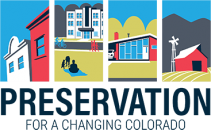
Introduction
The past 50 years have seen remarkable achievements for the preservation movement in Colorado. The coming decades hold the promise of more great accomplishments for preservation—but also new opportunities and challenges. This section moves beyond strictly economic benefits and looks ahead at the ways in which Colorado’s people and places are expected to change over the next 50 years and beyond, and how historic preservation is evolving and will continue to play an important role in our state’s future.
-
Changing Demographics. Colorado’s demographic profile is evolving in a wide variety of ways, some consistent with national trends and some unique to our state. Examples include an growing senior population, more multi-generational households, an increased immigrant population, continued growth in urban and suburban areas, and fewer car-owning households. Preservationists, in collaboration with developers, planners, non-profits, and others are helping to meet the housing, employment, and recreational needs of our state’s increasingly diverse population.
-
Changing Economy. In addition, our state’s economy is changing in various ways. Preservation is helping to respond to larger economic trends in creative and exciting ways, in part by supporting the rise of creative communities and by providing new types of unique work spaces.
-
Effective Placemaking. Preservation is playing an important role in helping communities of all sizes to create and invigorate meaningful places. Rather than see a growing population as a threat, many communities are recognizing that their history helps create and retain a unique sense of place, which can in turn set a pattern for thoughtful, well-planned new development. Indeed, Colorado’s towns and cities are embracing the challenge of holding on to their history and heritage amidst the flush of growth.
-
Changing Climate. As Colorado confronts increasing threats from wildfires, floods, and other natural and man-made hazards, local officials are devoting renewed attention to community resiliency. Preservationists are focusing on how historic resources can be protected in planning for hazards.
The following pages explore these complex issues in more detail, with numerous featured projects illustrating successful adaptations to these new trends.
